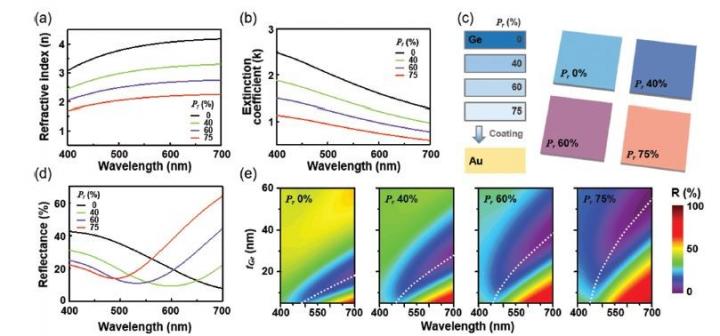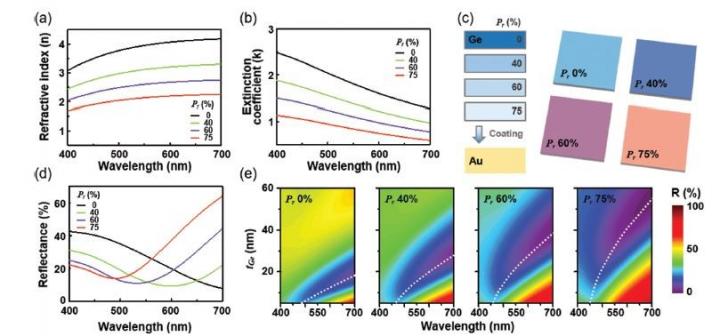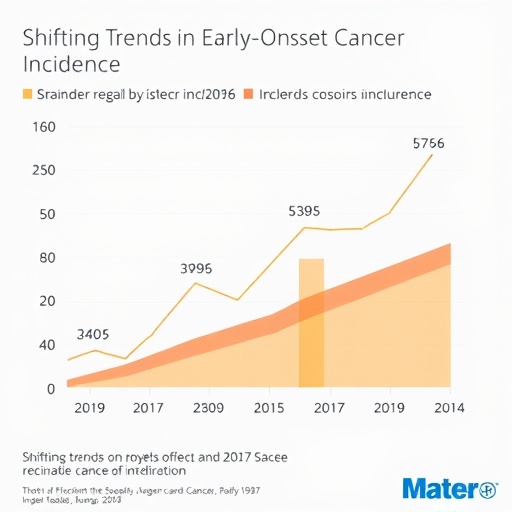
Credit: DGIST
DGIST announced that Professor Kyung-in Jang's research team succeeded in developing a technology that can control various color changes by coating several nanometers of semiconducting materials on a metal substrate through joint research with a research team led by professor Young-min Song of GIST.
Professor Kyung-in Jang's research team has succeeded in changing the unique color of metals such as gold, silver, aluminum, etc. with strong thin-film interference effect caused by light reflected on the surface of the metals and semiconducting materials by coating an ultra-thin layer of several nanometers (1 nanometer is one one-billionth of a meter) of semiconductor substances on the metals.
There have been previous studies that show that color changes depend on the thickness of ultra-thin film of semiconducting materials such as germanium coated on a gold substrate; however, there have been some difficulties due to the rapid change of colors and with color darkening techniques.
The research team coated a thin germanium film of 5 to 25 nanometers on a gold substrate by utilizing oblique angle deposition (OAD). As a result, they succeeded in producing various colors such as yellow, orange, blue, and purple at will according to the thickness and deposition angle of the germanium coating.
It was confirmed that the range of color expression expanded and the purity of color was enhanced by making a porous structure with a large number of fine holes that have a significant presence in the germanium layer. By applying the oblique angle deposition method, the variation and purity of colors were also varied according to the thickness change of the germanium film in nanometers.
Professor Kyung-in Jang from DGIST's Department of Robotics Engineering said, "The result of this research is the development of a simple method of applying various colors to existing electronic devices and currently we have succeeded in expressing single colors, but we may also be able to coat patterns such as symbols and pictures. In the future, I think it can be used in coating visual designs on flexible devices such as solar cells, wearable devices, and displays that are used for various purposes including building exterior walls. It can also be applied in camouflage by coating things with the same pattern or color as the surrounding objects."
Meanwhile, this research outcome was published on December 9, 2016 in the online edition of Nanoscale, an international academic journal in the field of nanotechnology, and the research was supported by the basic research project (collective research) of the National Research Foundation of Korea.
###
Journal Reference
Kyung-In Jang, Young-Min Song, et. al., "Ultra-thin Films with Highly Absorbent Porous Media Fine-tunable for Coloration and Enhanced Color Purity," Nanoscale 2016.
Media Contact
Dahye Kim
[email protected]
82-537-851-163
http://www.dgist.ac.kr
############
Story Source: Materials provided by Scienmag





